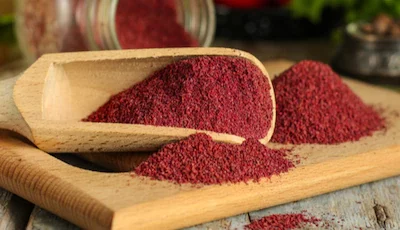Health
10 Benefits of holy basil and side effects

Holy basil, also known as tulsi, is known for its therapeutic power. It has a rich history dating back 3,000 years to the ancient uses of India, historically used as a medicine due to its broad therapeutic power, holy basil leaves are considered by most countries as adaptogens (anti-stress agents) and The benefits of holy basil have been used extensively to promote health throughout the body.
Holy basil is suspected of being native to tropical Asia, although it now grows in many tropical climates around the world.
Today, tulsi or holy basil is commonly consumed in supplement form or as a tea. It is used as a natural remedy for anxiety , adrenal fatigue, hypothyroidism, unbalanced blood sugar, and as a home remedy for acne.
In modern medicine, in recent decades, various Indian scientists and researchers have studied the pharmacological effects of various parts of the plant and the benefits of holy basil on the immune system, reproductive system, central nervous system, cardiovascular system, gastric, urinary system and blood chemistry.
The researchers described the therapeutic importance of holy basil in treating and alleviating various ailments, and established a scientific basis for the plant’s therapeutic uses.
Helps protect organs and tissues against chemical stresses from industrial pollutants and heavy metals and physical stress due to prolonged physical exertion, ischemia, physical restraint, and exposure to cold and excessive noise.
1.- Fight against acne
The benefits of holy basil help kill bacteria and infections, making it a great natural home remedy for acne and other skin irritations. Holy basil is believed to benefit the skin and help treat skin infections both internally and externally.
The main active compound in holy basil oil is eugenol, also the active ingredient in the powerful antimicrobial clove oil , which is believed to help fight many skin disorders.
Holy basil also contains other therapeutic components, including gamma-caryophyllene and methyl-eugenol.
Research published in the International Journal of Cosmetic Science shows that holy basil can be a natural treatment for acne; When used with coconut oil as a carrier, holy basil absorbs into the skin even better and could be even more effective.
2.- Benefits of holy basil for diabetes
The benefits of holy basil appear to include the ability to control blood glucose levels as demonstrated by various experiments in test tubes and animals, as well as in human clinical trials.
A single-blind, randomized, placebo-controlled trial of holy basil leaves points towards the antidiabetic activity of holy basil; In this trial, patients with non-insulin dependent diabetes experienced decreases in fasting blood sugar levels, postprandial blood sugar levels (after a meal), urine blood sugar levels, and mean urine levels. total cholesterol during the holy basil treatment period. Usually,
3.- Benefits of holy basil for cancer
In general, the benefits of holy basil can not only work as a natural treatment for cancer , but it can also serve to prevent it.
Research shows that people who use tulsi regularly are less likely to be immunocompromised and less susceptible to developing cancer cells.
According to published research, tulsi and its phytochemicals (including eugenol, rosmarinic acid, apigenin, myretenal, luteolin, β-sitosterol, and carnosic acid), in some cases, can help prevent liver, chemical-induced lung, oral cancer and of the skin because they increase antioxidant activity, alter healthy gene expressions, induce the death of cancer cells, prevent the growth of blood vessels and contribute to the growth of cancer cells and stop metastasis, which is the spread of cancer from one organ to another .
The sacred benefits of basil also appear to help protect the body from radiation poisoning and help treat damage from radiation treatment. Selectively protects normal tissues against the destructive effects of radiation.
In fact, an interesting review describes the important research involving the ability of holy basil benefits to help fight cancer that we have seen in recent years.
Doctors involved in this research agree that conventional chemotherapy and radiation treatments used over the past three decades have been unable to contain the disease and have serious side effects.
Many natural agents, especially holy basil leaves and extracts from other plants, are found to be non-toxic, easily accessible, and have proven anti-cancer properties.
4.- Balances hormones and reduces stress
The benefits of holy basil include the incredible ability to naturally keep hormone levels balanced ; it has a positive physical effect on the body and mental benefits as well; By drinking tulsi tea or adding tulsi to your meals, you help calm your system and keep your body running smoothly.
According to a scientific article published in 2014 , there is growing evidence that the benefits of holy basil can improve physical, chemical, metabolic and psychological stress.
Some other evidence for this stress-reducing effect includes the ability of holy basil to improve reaction times and error rates in human subjects compared to placebo.
Similarly, holy basil includes three phytochemical compounds that help achieve these results; the first two, ocimumosides A and B, have been identified as anti-stress compounds and can reduce blood corticosterone (another stress hormone) and create positive alterations in the brain’s neurotransmitter system.
The third, 4-allyl-1-O-beta-D-glucopronosyl-2-hydroxybenzene can also reduce stress parameters in laboratory studies.
5.- Relieves fever
Holy basil is often recommended as a natural fever treatment, especially by Ayurvedic medicine practitioners.
Holy basil leaves are believed to act as antibiotic, germicidal, and disinfectant agents, meaning that they can protect us from bacteria and viruses; When we have a fever, it is proof that our bodies are fighting an infection.
Therefore, with its infection-fighting properties, tulsi can help fight fever and restore your health quickly.
6.- Helps to improve respiratory disorders
The benefits of holy basil are found in the components of tulsi leaves, which include camphene, eugenol, and cineole, which help relieve congestion and other symptoms of respiratory disorders.
Scientific studies have confirmed that holy basil possesses impressive anti-asthmatic abilities and can facilitate breathing, making it a commonly recommended herb for respiratory problems in Ayurvedic medicine.
Vitamin K is an essential fat-soluble vitamin that plays an important role in bone health and heart health.
It is one of the main vitamins involved in bone mineralization and blood clotting, but it also helps support brain function, healthy metabolism, and cellular health.
One cup of tulsi leaves has more than your recommended daily value of vitamin K, making it a perfect source to avoid vitamin K deficiency . Additionally, vitamin K can be beneficial for bone density, digestive health, and brain function.
Animal studies published in Alternative Medicine Review also show that many of the benefits of holy basil include cardioprotective properties – in other words, it appears to improve heart health.
8.- Dental care and oral health
Holy basil has the power to fight bacteria in the mouth that lead to dental problems, such as cavities , plaque, tartar, and bad breath. Tulsi leaves serve as a mouth freshener because they kill bacteria and germs that hide in the mouth.
The sacred benefits of basil include helping decrease mouth ulcers, and in vitro studies show that it can stop the growth of oral cancer cells.
For natural dental care, try adding a drop of holy basil essential oil to your toothpaste or drinking a cup of tulsi tea every day.
9.- Benefits of holy basil for headaches
Ayurveda practitioners recommend holy basil as a natural headache remedy that can help relieve migraine pain.
Some believe that this is due to its ability to relieve sinus pressure, and recommend diffusing holy basil essential oil or preparing tulsi tea to reduce headache symptoms.
10.- Supports eye health
Our eyes are susceptible to viral, bacterial, and fungal infections that can be very dangerous.
Fortunately, holy basil benefits include helping fight these damaging infections; It is prescribed in Ayurveda to combat conjunctivitis, also commonly known as pink eye , thanks to its anti-inflammatory and soothing properties.
It can also help prevent a variety of eye problems, including cataracts ; Topical administration of an herbal eye drop blend containing extracts of turmeric and holy basil helps counteract oxidative stress and the formation of insoluble proteins that lead to cataracts
History of holy basil
Holy basil, or tulsi as it is known in the various Indian languages, is an important medicinal plant in many traditional and popular systems of medicine in Southeast Asia; It is a medicinal herb that Hindus consider a sacred plant in the Indian subcontinent.
In traditional systems of medicine, different parts of holy basil or tulsi – the leaves, stem, flower, root, seeds and even the whole plant – have been recommended for the treatment of bronchitis, bronchial asthma, malaria, diarrhea , dysentery, skin diseases, arthritis , painful eye diseases, chronic fever, snake bites and scorpion stings.
In fact, of all the herbs used in Ayurveda, holy basil is preeminent, and scientific research now confirms the benefits of holy basil. As I mentioned earlier, there is growing evidence that this herb can address physical, chemical, metabolic, and psychological stress through a unique combination of pharmacological actions.
Ayurveda is the oldest medical system in the world, it has a holistic approach to health and disease that focuses on preserving and promoting good health and preventing disease through healthy lifestyle practices, including regular consumption of herbs. adaptogens that have the power to enhance the body’s ability to balance in a world with a ton of stressful components.
For this reason, Ayurveda practitioners recommend the regular consumption of tulsi tea as an essential lifestyle practice.
Nutrition Facts of Holy Basil
Holy basil is an aromatic shrub in the basil family (Lamiaceae) that is believed to have originated in north central India and now grows natively in the tropics of the eastern world.
Also known as tulsi, it is a perennial that has a slight lemon scent and purple-pink flowers, the leaves are oval in shape with a slightly tapered tip, and the edges are slightly serrated.
There are two common types of holy basil (tulsi): Rama tulsi has a white stem and green leaves; Shyam tulsi has a deep pinkish purple stem and leaves. Both types are similar in smell and benefits.
A quarter cup of fresh holy basil leaves (six grams) includes the following:
• 1 calorie
• Cholesterol free
• 0.2 grams of sodium
• 0.2 grams of carbohydrates
• 25 micrograms vitamin K (31 percent DV)
• 317 IU vitamin A (6 percent DV)
• .1 milligrams manganese (3 percent DV)
Possible side effects of holy basil
• Researchers have found that holy basil is safe for regular consumption and topical use.
• One note to keep in mind is that holy basil (tulsi) can slow down blood clotting, so taking tulsi along with medications that also decrease clotting can increase the chances of bruising and bleeding.
• Some medications that decrease blood clotting include aspirin, clopidogrel, dalteparin, enoxaparin, heparin, ticlopidine, and warfarin. Due to its influence on blood clotting, you should stop using holy basil two weeks prior to any scheduled surgery.
How to use and cook holy basil
• Holy basil plants are grown in almost every Hindu home. The leaves have a sweet, aromatic smell and a minty flavor; they are used to garnish foods, sauces and soups. They are also commonly used to make juices, flavored water, and tulsi tea; In India, people eat raw tulsi leaves to fight coughs or colds.
• You can buy and care for a holy basil plant, or you can buy tulsi leaves and powder from a health food store. If you buy fresh holy basil, look for leaves that are vibrant and green, without holes or dark spots.
To prepare the tulsi leaves, clean them well and roughly chop them with a kitchen knife, it is best to use fresh tulsi leaves within a day or two, but they can be kept in a sealed bag in the refrigerator for five more days or less.
• Tulsi tea is a popular drink in India that is consumed in place of coffee. You can find tulsi tea in many health food stores; comes in tea bag boxes.
You can also buy dried tulsi leaves in bulk and use a tea ball to make this beneficial and flavorful tea; If you prefer iced tea, it’s easy to let the tea cool, add ice and even a little stevia or lemon for flavor; You can also prepare tulsi juice, which includes five tulsi leaves that have been infused in water.
• Holy basil / tulsi essential oil can be found in many health food stores or online. The essential oil is extracted from the holy basil plant and is used in lotions, soap, perfume, shampoo, and conditioner. You can also spread the oil in your home; the calming and immunostimulating properties can also be inhaled.
• Finally, holy basil is often available in supplement form. It is typically in capsules and is sometimes offered in fermented options, which some sources suggest is easier to digest.
Health
Managing Chronic Pain: Integrative Techniques for Wellness

Key Takeaways
- Understanding chronic pain and its various treatment options is essential for effective management.
- Lifestyle factors, including diet, exercise, and sleep, can significantly influence chronic pain.
- Integrative techniques, including medical treatments and complementary therapies, are vital in tackling pain holistically.
Understanding Chronic Pain
Chronic pain is a persistent type of pain that can last for months or years and may be caused by various factors. In contrast to acute pain, it can continue even after the original injury has healed. Healthcare professionals evaluate a patient’s self-reported pain level and the impact it has on their daily activities to address the complexity of chronic pain. When the underlying cause is unknown, multidisciplinary approaches are necessary to relieve pain.
The Role of Lifestyle in Chronic Pain Management
In the quest for relief, many find solace in discovering a reputable pain clinic near me that employs a range of treatment options. Diet and chronic pain have a significant, if not entirely understood, relationship. Pro-inflammatory foods, excessive caffeine, alcohol, and refined sugars tend to exacerbate inflammation, potentially intensifying pain. On the other hand, anti-inflammatory foods such as fatty fish, greens, nuts, and seeds may help reduce inflammation and, as a result, pain. Consistent hydration and balanced meals can support the body’s natural coping mechanisms. Creating a personalized diet plan with a nutritionist or dietician can be a proactive step in managing chronic pain through lifestyle. Being physically active is critical to managing chronic pain.
Medical Treatments for Chronic Pain Relief
Medications often serve as the first line of defense in chronic pain management. NSAIDs, for example, are commonly used to alleviate inflammation and pain. Antidepressants and anticonvulsants can also be prescribed for their pain-relieving properties. Caution must be taken, especially with more robust, potentially habit-forming medications such as opioids; these should only be used when necessary and with a strict plan for monitoring and tapering. Furthermore, patients are encouraged to ask their healthcare providers about potential side effects and interactions with other medications.
Beyond pharmacological measures, interventional treatments like nerve blocks, epidural steroid injections, and radiofrequency ablation offer non-surgical pain relief for various conditions. In some cases, these targeted procedures may provide lengthy periods of relief and help patients engage in physical therapy and rehabilitation more effectively.
With chronic pain being such a dynamic and individualized issue, research into new therapeutic methods is ongoing. Treatments such as platelet-rich plasma therapy (PRP) and stem cell injections are emerging as potential alternatives. They focus on repairing damaged tissues and reducing pain naturally. However, consulting with experienced pain management specialists before considering these advanced options is essential.
Psychological Approaches to Pain Management
Chronic pain has deep psychological and emotional roots in addition to physical causes. Therapies like Cognitive Behavioral Therapy (CBT) address the thought patterns that can worsen pain perception and decrease the quality of life. Patients can learn to change these thoughts, engage in positive behaviors, and develop strategies to manage setbacks in their pain journey. Biofeedback is a technique that measures and provides real-time data on bodily functions, such as heart rate, muscle tension, and skin temperature. It helps patients gain voluntary control over these functions, and mastering such autonomic processes can improve pain management and give a greater sense of personal power.
Emotional well-being is integral to pain management, as negative emotions can intensify pain perception. Healthcare providers may recommend therapy sessions to address the psychological impacts of chronic pain, helping individuals cope with associated feelings of frustration, depression, or isolation. These therapeutic approaches highlight the importance of treating chronic pain as a comprehensive, biopsychosocial condition.
Navigating the Healthcare System
The complexity of healthcare systems can add a layer of stress for those managing chronic pain. Advocacy is critical. Patients must feel empowered to ask questions and make informed decisions regarding their care. Understanding how health insurance works, what treatments are covered, and how to access necessary medications is imperative. Healthcare professionals can also be invaluable allies in helping patients navigate these systems and ensure that they receive appropriate and timely care.
Looking Ahead: The Future of Pain Management
As we learn more about pain, there is hope for better pain management through new treatments and technologies. For example, virtual reality therapies can help distract patients from pain and reduce its intensity by immersing them in relaxing environments. Scientists are also exploring innovations in pharmaceuticals, non-invasive brain stimulation techniques, and cognitive behavioral therapy apps to treat chronic pain more effectively. Additionally, personalized medicine, which considers an individual’s genetic makeup, lifestyle, and environmental factors, is set to revolutionize pain management.
Health
shocking health benefits of chanca piedra

Table of Contents
Health
10 shocking health benefits of eating white fish

Table of Contents
-

 Food2 months ago
Food2 months ago8 shocking benefits of leek juice and side effects
-

 Food2 months ago
Food2 months ago10 + Benefits of carrot juice and side effects
-

 Health2 months ago
Health2 months agoBenefits of guava leaves Sensually
-

 Health2 months ago
Health2 months ago10 shocking health benefits of Canary seed milk
-
Weight Loss2 months ago
Chrissy Metz Weight Loss Secret (2022)
-

 Health2 months ago
Health2 months ago7 health benefits of cashew leaves and side effects
-

 Weight Loss2 months ago
Weight Loss2 months agoKelly Osbourne weight loss 2022
-

 Food2 months ago
Food2 months agoHealth benefits of gongolili or vetiver and side effects












